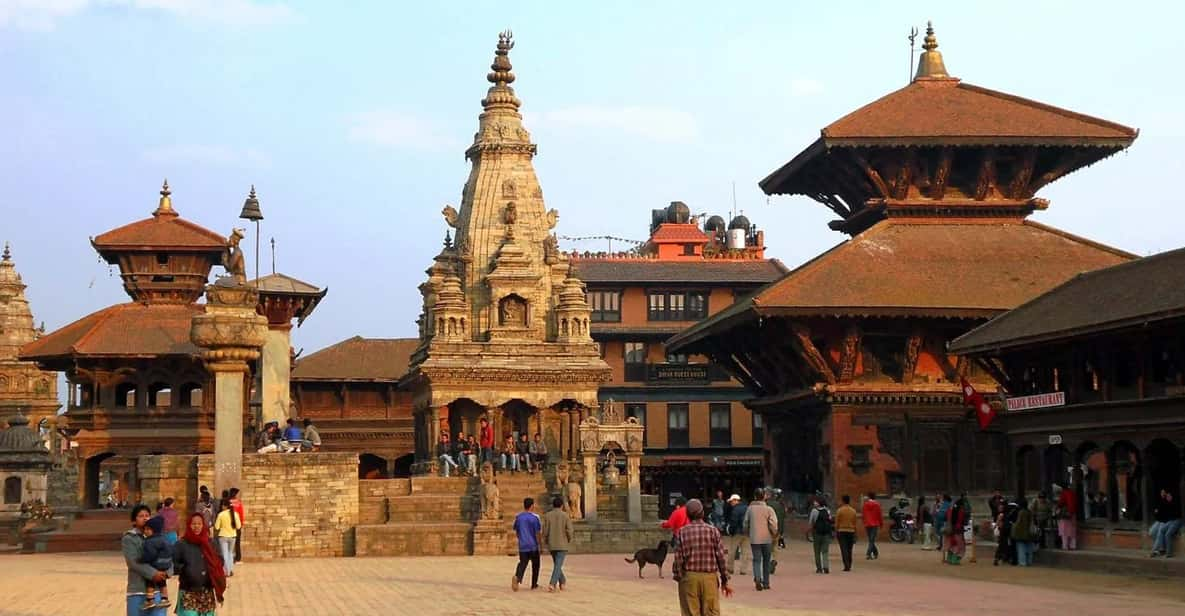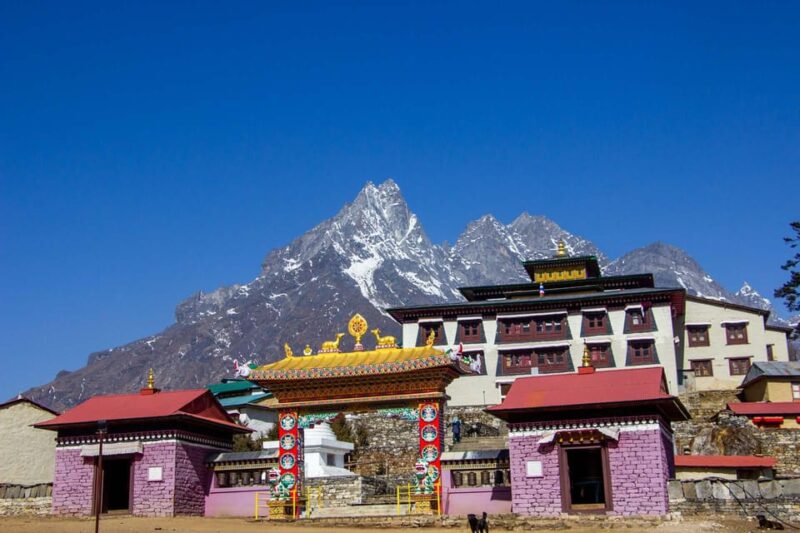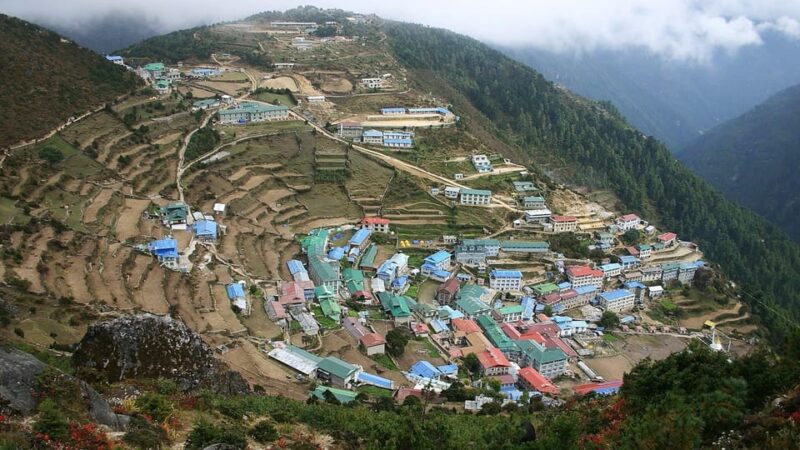The 14-day Everest Base Camp Trekking Tour presents an enticing option for those seeking adventure amidst the majestic Himalayas. With a starting price of $1,574.92 per person, the all-inclusive package covers everything from accommodations to breakfast and visa assistance. Trekkers can expect a well-structured itinerary that includes stunning landscapes and meaningful cultural interactions with local Sherpa communities. But before embarking on this journey, it’s essential to understand the unique challenges and preparations involved. What should one pack, and how does the acclimatization process work?
This experience made our list of the 25 Best Treks And Hiking Tours In Nepal.
Key Points

- The 14-day Everest Base Camp Trekking Tour starts at $1,574.92 per person and includes accommodations, breakfast, and entry tickets.
- The tour features a mix of cozy lodges and teahouses for comfortable accommodations throughout the trek.
- Acclimatization days in Namche and Dingboche help trekkers adjust to high altitudes with shorter hikes.
- Experienced guides and a flexible booking policy, including ‘reserve now, pay later,’ enhance the trekking experience.
- Proper gear, fitness readiness, and understanding altitude sickness symptoms are essential for a safe trekking experience.
Tour Overview and Pricing

The 14-day Everest Base Camp Trekking Tour offers adventurers an unforgettable journey through the Himalayas, starting at just $1,574.92 per person.
This all-inclusive experience features accommodations, breakfast, entry tickets, and even visa assistance. With a free cancellation policy up to 24 hours in advance, travelers can book with peace of mind.
Plus, there’s a “reserve now, pay later” option, making it easier for trekkers to plan their adventure without immediate financial commitment.
A live tour guide fluent in multiple languages ensures everyone feels comfortable and informed throughout the trek.
However, it’s important to note that this tour isn’t suitable for those with mobility impairments, so proper gear and physical readiness are essential for an enjoyable experience.
You can also read our reviews of more hiking tours in Nepal
Detailed Itinerary Breakdown

Exploring the detailed itinerary of the Everest Base Camp Trekking Tour reveals a well-structured plan designed to maximize adventure while ensuring proper acclimatization.
The journey begins in Kathmandu with a briefing before flying to Lukla, where the trek kicks off. Hikers will traverse stunning landscapes, from Phakding to Namche Bazaar, allowing ample time for acclimatization.
Days in Namche and Dingboche include short hikes to breathtaking viewpoints, crucial for adjusting to altitude. The trek continues to Gorak Shep and the iconic Everest Base Camp, culminating in a sunrise hike at Kala Patthar.
With a balanced mix of challenging treks and rest days, this itinerary ensures trekkers enjoy both the journey and the majestic Himalayan vistas.
Accommodations and Inclusions

Accommodations during the Everest Base Camp Trekking Tour provide a comfortable base for adventurers, ensuring a restful stay while immersing in the stunning surroundings. Trekkers can expect a mix of cozy lodges and teahouses equipped with essential amenities. Each day begins with a hearty breakfast, fueling the journey ahead.
Inclusions cover a private air-conditioned car for the entire tour, along with an experienced tour guide fluent in various languages, including English and Spanish. Entry tickets and visas are also taken care of, but personal expenses remain the trekker’s responsibility.
This structure allows trekkers to focus on the breathtaking views and rich Sherpa culture without worrying about logistical details.
Important Information for Trekkers

For trekkers planning the Everest Base Camp Trekking Tour, it’s important to be aware of certain guidelines and recommendations to ensure a safe and enjoyable experience.
First off, this trek isn’t suitable for individuals with mobility impairments, so trekkers should consider their fitness level before embarking.
Comfortable shoes are a must, as they’ll provide the support needed for the challenging terrain.
Plus, trekkers should pack light; large bags aren’t allowed on the trek, so a good backpack is essential.
Staying hydrated and taking regular breaks will help with acclimatization.
Finally, it’s wise to have a basic understanding of altitude sickness symptoms and to communicate any concerns with guides promptly.
Being prepared can make all the difference on this incredible journey.
More Great Tours NearbyExperience the Himalayas
Trekking through the Himalayas offers adventurers breathtaking views and a chance to enjoy the vibrant Sherpa culture that defines this incredible region.
Here are four highlights that make the experience unforgettable:
-
Stunning Landscapes: Marvel at towering peaks and lush valleys.
-
Cultural Encounters: Engage with local Sherpa communities and their traditions.
-
Flora and Fauna: Trek through forests of rhododendron, pine, and magnolia, spotting unique wildlife.
-
Acclimatization Adventures: Take short hikes to gain altitude and embrace the breathtaking surroundings.
Each step taken brings trekkers closer to the heart of the Himalayas, where every moment is a chance to connect with nature and culture.
Prepare for an adventure of a lifetime!
Cultural Insights and Landmarks
Exploring the rich cultural tapestry and iconic landmarks of the Everest region adds depth to the trekking experience, offering insights into the traditions and history of the Sherpa people.
Visitors can enjoy the vibrant atmosphere of Namche Bazaar, the bustling hub of the Khumbu region, known for its colorful markets and friendly locals.
A visit to Tengboche Monastery, one of the most important Buddhist monasteries in the area, allows trekkers to witness spiritual rituals and stunning views of the surrounding peaks.
Along the trails, trekkers pass through charming villages and witness daily life, enhancing their understanding of Sherpa culture.
Embracing these cultural insights not only enriches the journey but also fosters a deeper appreciation for this breathtaking region.
Recommended Gear and Packing Tips
Having the right gear can make all the difference on the Everest Base Camp trek, ensuring comfort and safety throughout the adventure. Here are four essential items every trekker should pack:
-
Comfortable Hiking Boots: A good pair of sturdy, waterproof boots is crucial for long days on rugged terrain.
-
Layered Clothing: The weather can change rapidly, so pack moisture-wicking base layers, warm insulating layers, and a waterproof outer layer.
-
Trekking Poles: These can reduce strain on your knees and help maintain balance on uneven paths.
-
Hydration System: Staying hydrated is key; a water bladder or reusable water bottle will keep you refreshed throughout the trek.
With the right gear, trekkers can fully enjoy the stunning views and rich culture of this unforgettable journey.
Booking and Cancellation Policies

When planning their Everest Base Camp adventure, travelers will find flexible booking and cancellation policies that cater to their needs.
Most tour operators offer a reserve now and pay later option, making it easier for trekkers to secure their spot without immediate upfront costs.
Plus, they provide free cancellation up to 24 hours before the trek starts, allowing peace of mind in case plans change.
This flexibility helps ensure that travelers can adjust their itineraries with minimal financial risk.
It’s always wise to read the fine print and clarify specific policies with the operator.
This way, trekkers can focus on preparing for their unforgettable journey through the breathtaking Himalayas, rather than worrying about logistics.
Frequently Asked Questions
What Is the Best Time of Year for the Trek?
The best time for trekking in the Everest region is typically spring (March to May) and autumn (September to November). During these months, the weather’s milder, offering clearer skies and stunning views for trekkers.
Are There Any Age Restrictions for Participants?
There aren’t strict age restrictions, but it’s advisable that participants be physically fit. Most trekkers are between 12 and 65 years old, ensuring they can handle the trek’s challenges and enjoy the experience fully.
What Is the Fitness Level Required for This Trek?
For this trek, a moderate fitness level’s required. Participants should enjoy hiking, handle altitude, and walk for several hours daily. Regular training, including cardio and strength exercises, will help prepare for the adventure ahead.
How Can I Prepare for Altitude Sickness?
To prepare for altitude sickness, he should gradually ascend, stay hydrated, and avoid alcohol. Eating light meals helps too. Taking rest days allows his body to acclimatize, reducing the risk of symptoms.
Are There Any Meal Options for Dietary Restrictions?
When considering meal options for dietary restrictions, travelers should inform their tour operator beforehand. Most operators accommodate vegetarian, vegan, and gluten-free diets, ensuring everyone enjoys delicious meals while trekking through stunning landscapes.
Recap
In summary, the 14-day Everest Base Camp Trekking Tour offers a thrilling experience filled with breathtaking views and rich cultural encounters.
With its all-inclusive package and flexible booking policies, trekkers can focus on the adventure ahead without the hassle.
Whether it’s your first trek or you’re a seasoned adventurer, this journey promises memories that’ll last a lifetime.
So, gear up and get ready to explore the majestic Himalayas—an unforgettable adventure awaits!
You can check availability for your dates here:More Hiking & Trekking Tours in Nepal
More Tours in Nepal
- Indra Jatra Tour in Nepal
- Chitwan National Park Tours: 3 Nights 4 days Full Package
- Tourist Information Center – Tours & Trekking In Nepal
- From Kathmandu: 3 Hour Chandragiri Cable Car Tour With Guide
- From Chitwan: Half Day Jeep Safari & Canoeing Day Tour
- From Chitwan: Day Tour Jeep Safari+Canoeing+Jungle Walk
More Tour Reviews in Nepal
Not for you? Here's more nearby things to do in Nepal we have reviewed
- Himalayan Sound Healing Workshop: Singing Bowl in Nepal.
- Nepal: Api Himal Trek to Base Camp
- Rolwaling Himal Trek 8 Days
- 10 Days Annapurna Circuit Trekking
- Indra Jatra Tour in Nepal
- Nagarjun Jamacho Day Hike Stunning Valley Himalayan Views
- Chitwan National Park Tours: 3 Nights 4 days Full Package
- Kathmandu-Pokhara Night Sofa Bus
- 10 Best Guided Tours In Nepal
- 25 Best Tours In Nepal
- 10 Best National Park Tours In Nepal
- Sunrise View From Sarangkot
